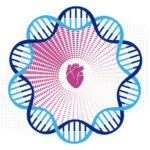The CAMEO tool: Capturing the complex nature of pediatric nursing

By any measure, nursing is a complex profession. On any given day, nurses must draw on a wide range of cognitive skills and clinical tools to care for their patients, and by extension, their patients’ families. As patients become increasingly complex, so do the specific proficiencies necessary to complete their jobs.
Measuring the cognitive complexity of nursing work is critical, not only in allowing hospitals to plan resource allocation, but also in providing the appropriate level of care for patients. When the nursing management team in the Cardiac Intensive Care Unit (CICU) at the Boston Children’s Hospital Heart Center discovered no tool existed to adequately capture the true cognitive nature of their pediatric nursing workload, they decided to develop their own, the Complexity Assessment and Monitoring to Ensure Optimal Outcomes (CAMEO) tool.
“In 2009 we realized we needed a better tool to help capture the work our nurses were doing,” says Jean Connor, PhD, RN, CPNP, FAAN, director of Nursing Research, Cardiovascular and Critical Care Services at Boston Children’s. That’s when she and Patricia Hickey, PhD, MBA, RN, NEA-BC, FAAN, vice president and associate chief nurse of Cardiovascular, Critical Care, and Perioperative Services, wrote a small grant to receive funds to develop a tool that would quantify nursing work.
“We were hearing from our nurses in the CICU that they were always super busy, and were straight out all day,” says Christine LaGrasta, DNP, RN, CPNP-PC/AC, who worked with Connor and Hickey to develop the tool. “But when we tried to describe the exact nature of their workload to Jean and Patty, we just didn’t have the right language.”
Going to the bedside to capture nursing skills
To develop the CAMEO tool, Connor and Hickey sat bedside with the CICU nurses in the Heart Center and asked them to describe in detail the responsibilities of their jobs. “The goal was to capture not only the hands-on care that nurses provide, but also the ‘invisible’ care related to prevention and mitigation of problems, “ says Hickey. These are the tasks and responsibilities that often go unrecorded, such as meetings with families, educating families about their child’s diagnosis, and coordinating services to help support the child.
“We captured as many of those tasks as we could and created a common language around them,” says Connor. “Then Christine and I quantified each with a weighting system on a scale from 1 to 5 in terms of cognitive workload complexity.” A cognitive complexity rating of 1 involved the least cognitive thought process, while a rating of 5 required the most.
During their initial analysis on the Heart Center’s CICU, the nurses found the range of CAMEO total scores was 25 to 230 (with a median of 124). In the initial cohort of patients, the cognitive complexity of care classifications was 13 percent as class 1 or 2, 80 percent as class 3 or 4, and 7 percent as class 5.
From these beginnings, the first CAMEO tool was developed and implemented in 2014 across each of the four ICUs at Boston Children’s. The team published a paper outlining their process and findings in 2015 in the American Journal of Critical Care.
Moving to inpatient units and validation
Shortly after the ICU roll-out, the nursing staff decided to create and implement a second CAMEO tool for the cardiac inpatient unit. “Today, the CAMEO tool is used in all inpatient and intensive care units in the hospital,” says Hickey. “And to this date, it’s still the only contemporary pediatric tool to effectively capture the complexity of the nursing workload in pediatric nursing.”
In 2019, the team published two additional papers in Dimensions of Critical Care Nursing, first outlining their findings from the four Boston Children’s ICUs, and then validating the use of the CAMEO in pediatric critical care nursing. They have recently completed a multicenter research study to validate the tool in nine hospitals nationally. Hickey says for years she has received many requests from hospitals around the world looking to adopt the tool, but they have held off until they could complete their validation. They hope to be able to offer CAMEO to other institutions this fall or early winter.
“We finished up the data collection about a year ago, and did a number of audits at the other sites to make sure the usage was consistent,” says LaGrasta. “There was a lot of enthusiasm at the site visits, and the nurses felt like their care was being validated. It’s really exciting to see how well the tool is translating to other sites.”
A powerful staffing tool
CAMEO is a powerful tool to help measure cost, quality, and resource allocation on the nursing floors. “Not only is it a way to articulate the value of our nurses, but it has also allowed us to better meet the needs of the unit and the entire patient care delivery system,” says Hickey. “It has allowed us to make the most informed decisions to match the needs of our patients with the competencies of the nurses. This ability is critical to inform how we allocate resources and provides a major benefit to us as an institution, ensuring we provide excellent patient care.”
The tool has even been able to capture changes in care since the COVID-19 outbreak. “Because we happened to be reviewing the tool at the beginning of the outbreak, we were able to account for the extra time it takes for nurses to don and doff personal protective equipment, which can be a significant effort.”
Hickey says that in the absence of other tools, physicians have also looked to CAMEO scores to help with their own staffing levels. “Staffing at a large pediatric institution is complex, and this is one important piece of data that was needed to make decisions.”
Learn more about the Heart Center and the CICU.
Related Posts :
-

Mending injured hearts: Lessons from newborns?
When the heart is injured, as in a myocardial infarction, the damaged heart muscle cannot regenerate — instead, scar tissue forms. ...
-

A surgeon’s last-minute trip to Sri Lanka reduces children’s wait for needed heart repair
Last year, Dr. Christopher Baird got an offer he couldn’t refuse — something that happens often as he travels the ...
-

The people and advancements behind 75 years of Boston Children’s Cardiology
Boston Children’s Department of Cardiology has more than 100 pediatric and adult cardiologists, over 40 clinical fellows learning the ...
-

In the genetics of congenital heart disease, noncoding DNA fills in some blanks
Researchers have been chipping away at the genetic causes of congenital heart disease (CHD) for a couple of decades. About 45 ...





